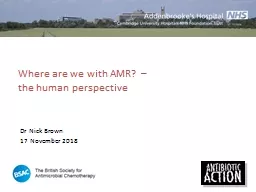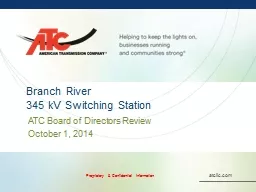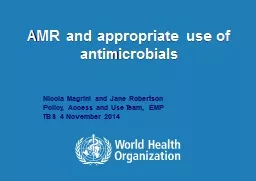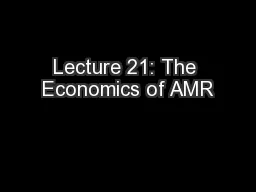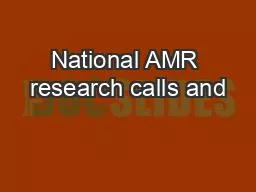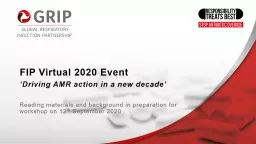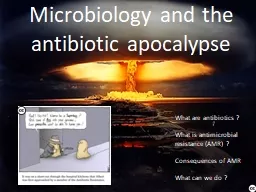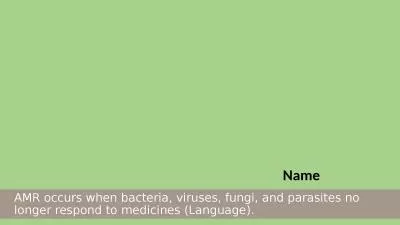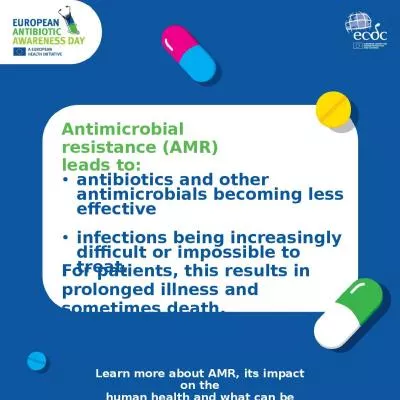PPT-Where are we with AMR? – the human perspective
Author : liane-varnes | Published Date : 2018-12-11
Dr Nick Brown 17 November 2018 It is not difficult to make microbes resistant to penicillin in the Laboratoryand the same thing has occasionally happened in the
Presentation Embed Code
Download Presentation
Download Presentation The PPT/PDF document "Where are we with AMR? – the human per..." is the property of its rightful owner. Permission is granted to download and print the materials on this website for personal, non-commercial use only, and to display it on your personal computer provided you do not modify the materials and that you retain all copyright notices contained in the materials. By downloading content from our website, you accept the terms of this agreement.
Where are we with AMR? – the human perspective: Transcript
Download Rules Of Document
"Where are we with AMR? – the human perspective"The content belongs to its owner. You may download and print it for personal use, without modification, and keep all copyright notices. By downloading, you agree to these terms.
Related Documents

